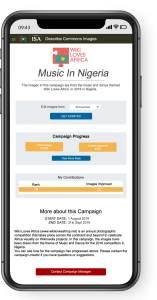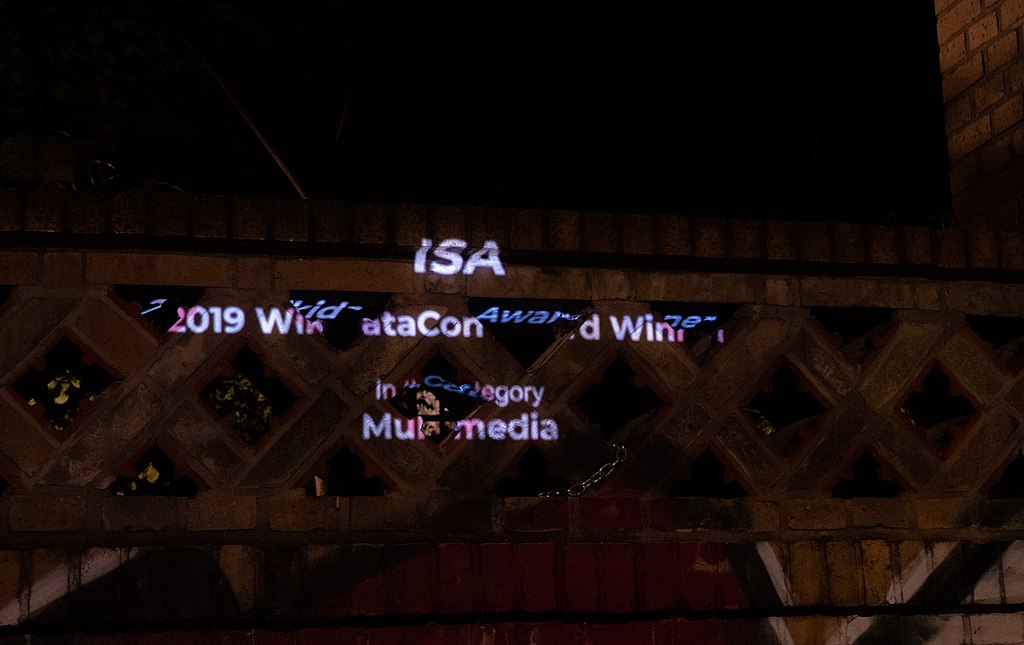
ISA is a new tool that makes it very easy for anyone, including absolute beginners, to add structured data descriptions in the form of captions and so-called ‘Depicts’ statements to images on Wikimedia Commons. ISA is called a ‘micro-contributions’ tool: when you use ISA, you make many very small edits to Wikimedia Commons in a playful way. We intentionally designed ISA to be multilingual and mobile-first; it has been such a hit that it received a WikidataCon 2019 Award in the Multimedia category last October. And why this name? ‘Isa’ is the chiShona language word for ‘put’ or ‘place’, but it was also chosen because it is an acronym for Information Structured Acceleration or Information Structured Additions.

Why did we decide to build ISA? The project was conceptualised by Wiki In Africa as a pilot project for Structured Data on Commons. We wanted to find a way to make the images submitted to Wiki Loves Africa campaigns more useful and relevant by describing them better, and came up with the idea to design a game-like tool for this purpose. The tool was developed by Eugene Egbe and Histropedia’s Navino and Sean; in the first place, it provides an easy way for organisers to create a campaign specifically to improve the description of images of Wiki Loves competitions. But the beauty of the tool is that it is extremely flexible: anyone can easily create ‘tagging’ and description campaigns on the basis of one or more categories on Wikimedia Commons. Campaigns can be promoted during events, or as an online drive through social media and other communications channels.
Some of the Campaigns that have been created since the launch of ISA can be found on the Campaign page, and include event drives at WikiIndaba, WikiArabia, Wikiconvention Francophone, and at WikidataCon. It can be used to introduce Wikidata during training events, as it was at the Goethe-Institut in Cameroon. It can also be used to drive global campaigns, such as the one being run as part of the MetaData Weeks being run by the Wiki In Africa team to drive awareness of the tool AND to encourage more useful information for images submitted to Wiki Loves Africa. The first of the MetaData Weeks is focused on Africa at Play! and runs until the 29th November. Open to everyone, but heavily advertised within the African community on the 18th November there had been over 16,000 contributions to the one category alone. There are prizes to be won! You can find out more details here: https://tools.wmflabs.org/isa/campaigns/39

Try creating a campaign for yourself! It is very easy to do. There is a comprehensive guide to developing campaigns, including developing communications materials for social media awareness.
ISA is developed as a collaboration between Florence Devouard and Isla Haddow-Flood at Wiki In Africa, Navino Evans and Sean McBirnie from Histropedia and Sandra Fauconnier and Mark Holmquist from the Structured Data on Commons team. Eugene Egbe is the developer. It is a GLAM pilot project for Structured Data on Wikimedia Commons.

How can you help?
- Use ISA! Participate in existing campaigns: ISA on Toolforge
- See how to create your own campaign on the manual page: ISA on Commons
- If you are a developer, look at the open tasks and contribute: ISA wishlist on Phabricator
- Translate ISA’s interface to your own language (as soon as we are live on Translatewiki.net)
This article was a collaborative effort between Isla Haddow-Flood and Sandra Fauconnier.

Can you help us translate this article?
In order for this article to reach as many people as possible we would like your help. Can you translate this article to get the message out?
Start translation